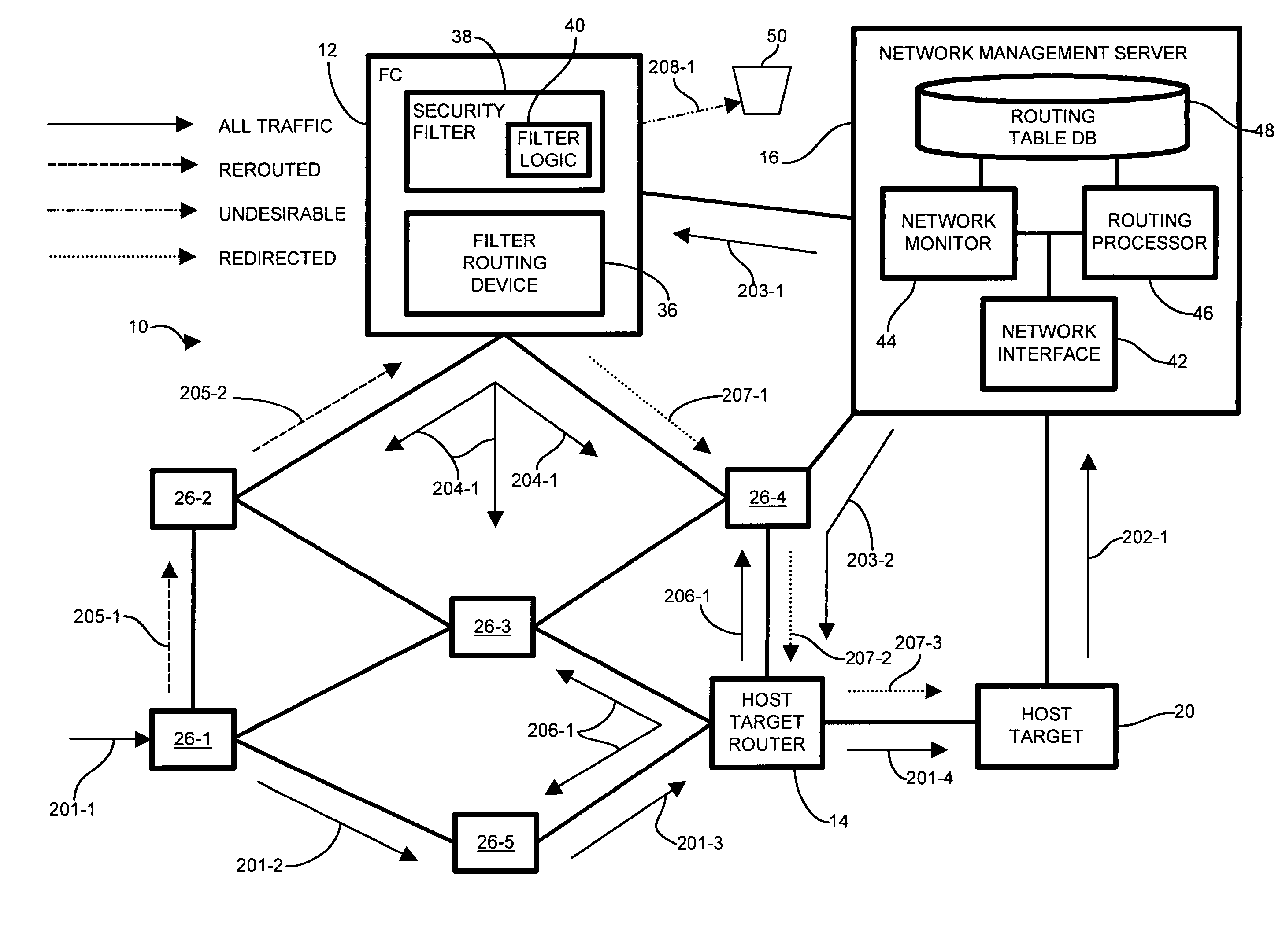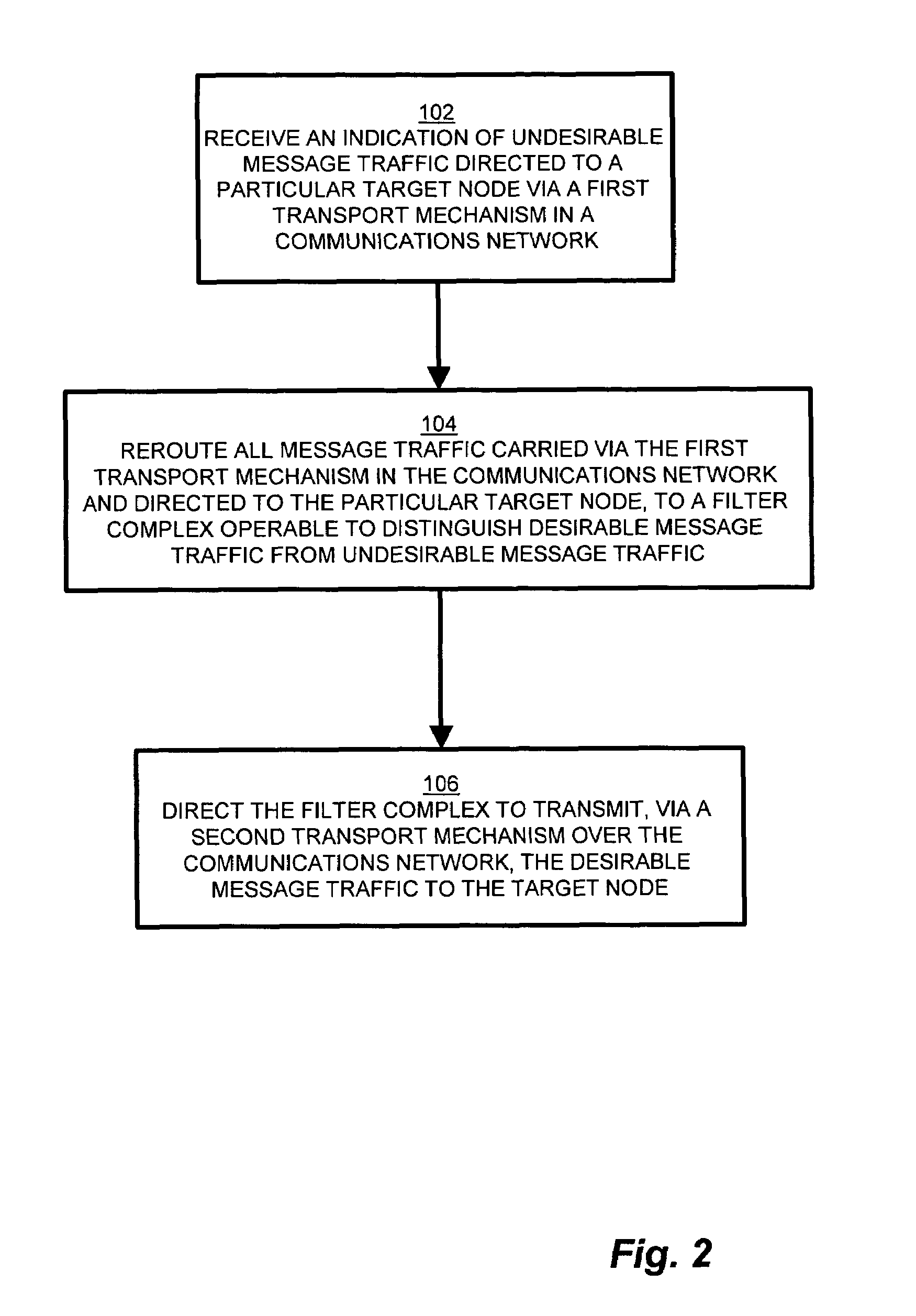Methods and apparatus for network message traffic redirection
a network message and traffic technology, applied in the field of network message traffic redirection, can solve the problems of inability of the target node to provide routing service to users, insufficient processing resources of the target node, and inordinate influx of message traffic to particular target nodes
- Summary
- Abstract
- Description
- Claims
- Application Information
AI Technical Summary
Benefits of technology
Problems solved by technology
Method used
Image
Examples
Embodiment Construction
[0027]Configurations of the invention provide for countermeasures to undesirable message traffic such as that presented by DDOS (Distributed Denial of Service) attacks. In a computer network system suitable for use with the invention claimed herein, a system operator monitors a network for undesirable message traffic. Upon a notification of such undesirable message traffic inundating a node, the system operator reroutes message traffic from the target node to a filter complex. The filter complex becomes the reroute destination temporarily replacing the target node, and propagates a network address according to a network protocol in use by the target node. A preferred target router formerly serving the target node also receives notification that it (the former preferred target router) is no longer the preferred router for the target node, and likewise propagates such routing information to other nodes in communication via the network protocol. The filter complex filters the message t...
PUM
 Login to View More
Login to View More Abstract
Description
Claims
Application Information
 Login to View More
Login to View More - R&D
- Intellectual Property
- Life Sciences
- Materials
- Tech Scout
- Unparalleled Data Quality
- Higher Quality Content
- 60% Fewer Hallucinations
Browse by: Latest US Patents, China's latest patents, Technical Efficacy Thesaurus, Application Domain, Technology Topic, Popular Technical Reports.
© 2025 PatSnap. All rights reserved.Legal|Privacy policy|Modern Slavery Act Transparency Statement|Sitemap|About US| Contact US: help@patsnap.com



